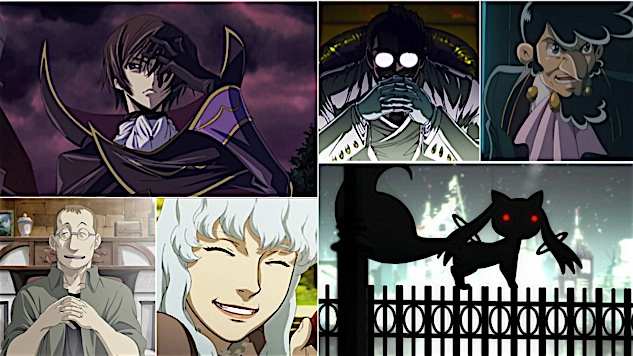
Every good hero needs a villain. This is as true for anime as for any other form of entertainment, but especially in the case of anime. With so much of anime being heavily focused on coming-of-age stories centered within action-adventure premises, it’s no wonder that villains are often some of the most widely recognized and, curiously enough, celebrated characters in anime fandom. Villains serves not only as the catalyst for a hero’s journey, pushing them to the peak of their potential by way of their own devious ambitions, but often represent the core thematic message at the heart of a series or film by way of their ideological opposition to the protagonist. There are many, many lists of what could be considered the “top” villains in the canon of anime.
And while those other lists might go about the task of ranking anime’s most nefarious adversaries by what could be basically boil down to a popularity contest, we’ve gone about our approach to this a bit differently. Speculative comparisons of hypothetical power levels have no bearing on the rankings of these villains, as those traits, while memorable to audiences worldwide, are ultimately superfluous to the qualities which make these characters so fascinating in the first place. Instead, for the purposes of this list, we’re going to break down these villains from a personality-focused perspective, divided into three categories based on their place not only in the medium of anime, but in the larger scope of literary and pop cultural significance. In the interest of curating a more holistic and fair-handed representation of anime’s greatest villains, we’ve limited the pool of inductees to one villain per series or film.
With that in mind, here are our three categories. “Archetypal Adversaries” are those villains whose appearances and arcs within their respective series represent not only a milestone in anime’s aesthetic maturation as a medium, but to the medium’s growing intersections within a broader literary context and cinematic lineage beyond anime. “Existential Antagonists” refer to those villains whose very existence or ideology poses a severe conflict of conscience or psychological challenge to their heroic counterparts. And finally, “Quintessential Sociopaths” refer to those villains who represent some of the most heinous, malevolent, and unsettlingly “intimate” acts of cruelty and barbarism depicted in the canon of anime. Ultimately, the purpose of this list is not only to rank some of the most iconic and inimitable malefactors in all of anime but to interrogate, tangentially if not directly, what the concept of “evil” and its depiction means with relation to these series and films.
One final preface: In order to meaningfully discuss the merits of these characters, this list will contain key revelatory details concerning these villains’ actions, motives, and conclusions. If you haven’t watched these anime yet and are skittish regarding “spoilers,” bookmark this for later and come back when you’re finished watching.

That said, let’s begin!
Here are 20 of the best anime villains:
20. The Count of Monte Cristo
Series: Gankutsuou: The Count of Monte Cristo (2004)
Category: Archetypal Adversary
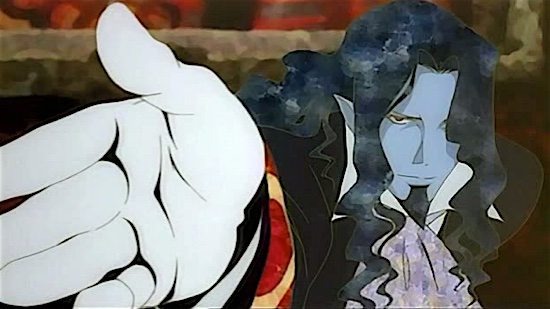
The Count of Monte Cristo is one of Alexandre Dumas’ most celebrated works, and for good reason. A classic of french adventure literature, the novel has gone on to inspire over forty screen adaptations since it was first serialized in 1844, each of them reenacting Edmond Dantes’ sordid odyssey of love, betrayal, perseverance and revenge. Mahiro Maeda and Shuichi Kouyama’s 2004 anime is an inspired take on Dumas’ original; a science-fiction drama rendered in a style of gilded psychedelia worthy of Gustav Klimt. The story at its heart remains. Edmond Dantes, accomplished sailor and fiancee of Mercédès Mondego, is betrayed by his close friends and stripped of his title and assets. Branded a conspirator, Dantes is condemned to a lifetime sentence in the hellish pits of the Château d’If. Here is where the story diverges: instead of meeting and befriending the mad priest Abbé Faria, Dantes instead forges a blood pact with demonic Gankutsuou, offering up his body and soul as its host in exchange for granting him the wealth and means through which to enact his revenge. Assuming the title of the Count of Monte Cristo, Dantes embarks on twenty-five year campaign to draw out his enemies and ensnare the conspirators who condemned him within the folly of their own designs. The Count is an anti-hero of sorts, a perceptive and restrained nobleman who bids his time to savor in the disgrace and pain of his former cohorts, all the while fighting to abide the ravenous cosmic horror which consumes his body like a disease.
19. Lelouch vi Britannia
Series: Code Geass: Lelouch of the Rebellion (2006)
Category: Archetypal Adversary

In the fiction of Code Geass, Japan has been annexed by the Holy Britannian Empire, a parallel world autocracy comprising what was once the American continents and the British Isles, and redubbed “Area 11,” stripping the nation of its autonomy and its citizens of their heritage and freedom. Lelouch Lamperouge, real name Lelouch vi Britannia, is a Britannian prince in exile, yearning to one day topple his father’s empire and create his own. Gifted with the mysterious power of “Geass,” Lelouch gains the power to bend the minds of others to his whim and assumes the masked nom de guerre of Zero, leading an uprising to bring Britannian to its knees. Ostensibly, this is all done in the name of avenging the death of his mother and safeguarding his disabled sister, but a darker disposition asserts itself as Lelouch approaches the cusp of victory. Intelligent, arrogant and naturally affable, Lelouch’s qualities later coalesce into psychopathy as he commits increasingly more brazen and horrendous acts of violence in the pursuit of what he would describe as “a better world.” He betrays his allies on a whim, brutalizes civilians caught in the line of fire, inflicting tremendous pain and suffering on his friends, only to then erase his own memory in an attempt to absolve himself of what few minor, intermittent pangs of guilt he is still capable of feeling. “What do you do when there is an evil you cannot defeat by just means? Do you stain your hands with evil to destroy evil, or do you remain steadfastly just and righteous even if it means surrendering to evil? […] In my case, I commit evil in order to destroy the greater evil.” Code Geass charts the course of Lelouch’s transformation from a machiavellian autocrat into a tragic figure, though the enormity of his atrocities cannot be overlooked in the light of his eventual repentance. Lelouch is essentially a Byronic anti-hero; Proud to a fault, propelled to greatness through the sheer force of his inner and outward contempt, only to be brought low by those very same traits.
18. Queen Beryl
Series: Sailor Moon (1992)
Category: Archetypal Adversary

The first major antagonist of Naoko Takeuchi’s acclaimed Sailor Moon series, Queen Beryl’s motives and modus operandi set the bar for the Sailor Scouts’ increasingly formidable cast of adversaries. The emissary of the malevolent force known as Queen Metallia, the sorceress Beryl led an army of possessed humans to lay siege to the Moon Kingdom, eradicating their utopian civilization and claiming the lives of Prince Endymion and Princess Serenity, who centuries later would reincarnate as Mamoru Chiba and Usagi Tsukino. When anime aficionados typically rank the “greatest of all-time” villains, Queen Beryl, well, doesn’t exactly leap to the top of anyone’s list. In the argument of who constitutes as some of the best “archetypal adversaries” to appear in anime, however, Beryl most definitely has a shot. The leader of the “Dark Kingdom” is anime’s answer to Power Ranger’s Rita Repulsa and Lord Zedd, an audacious supervillain brooding from some overly extravagant throne, waving their hands over some nondescript evil object (typically a crystal ball), throwing everything and the kitchen sink at their respective nemesis to further some megalomaniacal aim. There’s value in acknowledging some of the more prototypical examples that make up the canon of anime villainy, and Queen Beryl machinations and mannerisms certainly warrant distinction.
17. Harry Mcdowell
Series: Gungrave (2003)
Category: Archetypal Adversary
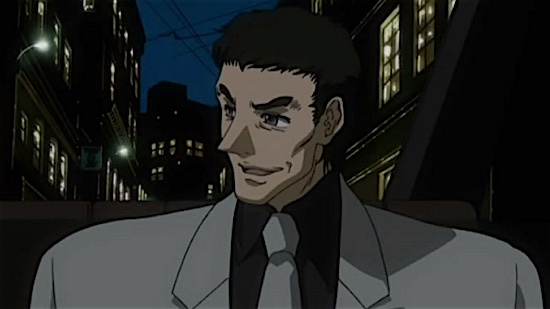
On any other list, this would typically be the point where Cowboy Bebop’s Vicious would make his appearance. However, as stated before, this isn’t your typical list. But before we address the matter of Vicious’ apparent absence, let’s talk about Harry. Harry Mcdowell started out as a low-level street hustler, squaring off in back alley scuffles over pockets of territory and grifting paramours to bathe in the shadow of a wealth that had always eluded him. Smart, cunning and ambitious—Harry always had aspirations for more—he dreams of climbing to the top and lifting up the ones closest to him along the way. This is especially the case with his partner and best friend, Brandon Heat. In those three sentences, I have told you more about the man who would later come to be known as “Bloody” Harry, notorious head of the Millenion Corporation and scourge of Billion city, than the entirety of Cowboy Bebop tells its audience about Vicious. To be fair, there’s something to be said of the allure of the enigmatic—the flowing coat, the perpetually obscured profile, the terse ultimatums spoken through flashes of anger as sudden as lightning streaking across the pitch of night. Vicious is a formidable figure, but when it comes the depth of his motivations and characters, he’s a shallow pool. When one has to strain themselves to describe five defining qualities of a character and can only reliably come up with one (i.e. that character’s name), you know something about them is left to be desired. Vicious is not so much Spike Spiegel’s foil as he is his shadow, a character whose existence is created solely to act as an antagonistic force and nothing more. Harry Mcdowell, by comparison, is his own person, a character with his own arc and motivations that are clearly stated and distinct from that of Brandon’s. Anime critic Richard Eisenbeis once described Cowboy Bebop as “the epilogue to a story we never got to see.” If that’s the case, then Gungrave is a series whose prologue all but eclipses its present, relegating it to little more than an afterthought. That quality of the former heightens the mystique of its future-noir allure at the cost of the cutting down the dimensions of some of its key characters, of which Vicious is an example. Harry may not exude the same aura of “cool” as Vicious, but he’s got it where it counts: a fully fledged arc and personality that makes his sudden yet inevitable betrayal all that more gut-wrenching.
16. Nui Harime
Series: Kill la Kill (2013)
Category: Archetypal Adversary

There’s a trope in popular fiction known simply as “The Dragon.” Reserved for a particularly intimidating tier of adversary, “dragons” refer to villains who, while subservient to a supposed greater evil, assert their cultural preeminence through the single-minded ruthlessness of their tactics and the long shadow of fear cast through their mere presence. Put simply, they are the great penultimate obstacle, the face of evil that you grow intimately to hate or, as fandom often inspires, to love. Emperor Palpatine had Darth Vader. Joffrey Baratheon had Tywin Lannister. Kill la Kill’s Ragyo Kiryuin has Nui Harime. Grand Couturier of the Revocs Corporation and murderer of Ryuko Matoi’s father, Nui is a life-fiber hybrid human with tremendous power and a disquietingly chipper disposition. A bubbly sociopath with a penchant for corkscrew ponytails and pink Lolita fashion, Nui is a formidable combatant who dispenses opponents with ease, often with a sadistic glee at stripping them down spiritually in the midst eviscerating them physically. There are a number of notable “dragons” in anime, but what sets Nui apart is her comical nonchalance, her manipulative cruelty, and her flair for fourth wall breaking theatrics. To be clear: we’re talking about a villain who decapitated themselves not only to supplement the power of their master, but simply to deny the protagonist the simple satisfaction of killing them themselves. Now that is next-level pettiness.
15. Char Aznable
Series: Mobile Suit Gundam (1979)
Category: Archetypal Adversary

Char, too, is another adversary cast in the mold of the Byronic anti-hero. Born Casval Rem Deikun, the boy who would grow to become the infamous mobile suit pilot dubbed “The Red Comet” on the battlefield was the son of Zeon Zum Deikun, a political activist who campaigned for the independence of space-faring humans from the Earth Federation before his assassination. Cast into hiding on Earth with his sister Artesia, Casval (under the assumed alias Édouard Mass) would later befriend the real Char Aznable, a Texas-born civilian who later chooses to enlist in the military of the newly established Principality of Zeon. In a failed assassination attempt, the real Char is killed and Casval subsequently takes on his name to enlist in his place, the first of many steps to destroy the conspirators that destroyed his family and claim his birthright as the leader of the Principality. If this elaborate feint of mistaken identities seems machiavellian, it’s no mistake. Char was a shrewd strategist from a young age, as bold as he was uncompromising. These qualities only developed tenfold as he grew into his new name, eventually seizing power and turning his attention to the eradication of Earth. Char Aznable is one of Mobile Suit Gundam’s most iconic characters and an archetype in every sense of the word. His relationship with adopted identities predates and parallels with that of Gundam Wing’s Trowa Barton, and his Zorro-like visor has become the template by which nearly every subsequent antagonist’s appearance throughout the Gundam franchise is derived. In a time where anime characters were either portrayed as heroes or villains, Char was revolutionary, a harsh and enigmatic loner who played with the lives of others as though they were pawns in some larger endgame, all the while anchored by a tragic past and sympathetic ideals. Char’s later feud with Earth Federation pilot Amuro Ray over the affections of the Newtype psychic Lalah Sune would only further cement his reputation, delivering viewers one of the most remarkable rivalries in all of anime.
14. King Piccolo
Series: Dragon Ball (1986)
Category: Archetypal Adversary
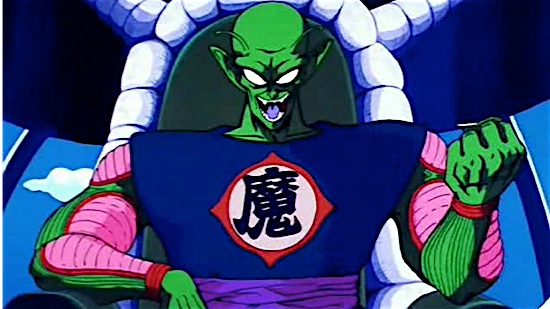
Dragon Ball has no shortage of noteworthy villains. Ask any fan of the venerable anime juggernaut who their favorites are and you’ll be treated to run-down of some of shonen anime’s best. Frieza, Vegeta, Majin Buu, Perfect Cell—hell, even the Ginyu Force gets some love by dint of their sentai-styled flamboyance. But of all the nefarious ne’er-do-wells and megalomaniacs Akira Toriyama’s magnum opus has to offer, we’d be remiss to not pay homage to the one villain who not only set the template by which all previously mentioned adversaries adhere, but whose legacy has outlasted and transformed more than any other in the series’ history. King Piccolo is Dragon Ball’s Lucifer analog, an entity of pure malice inadvertently created by Kami, the spiritual guardian of Earth, as a way of voiding himself of all evil. Piccolo is arguably the first villain in the series to pose a serious threat to not only Goku and company, but to the entire world. Far from the jocular Emperor Pilaf or the pedestrian megalomania of Commander Red, Piccolo’s conquest for power came about through dire consequences: the killing of Krillin and Master Roshi, the theft of the dragon balls, and the near-death of Goku himself. But his greatest achievement was the creation of his reincarnation, Piccolo Jr., a character whose transformation from the spawn of pure evil to reluctant anti-hero to a faithful ally of Goku and champion of Earth earns him the title of the most dynamic character in the entirety of Dragon Ball. There are more powerful villains than King Piccolo, for sure, but it was his presence that set the bar for all those to come.
13. Tetsuo Shima
Series: Akira (1989)
Category: Archetypal Adversary
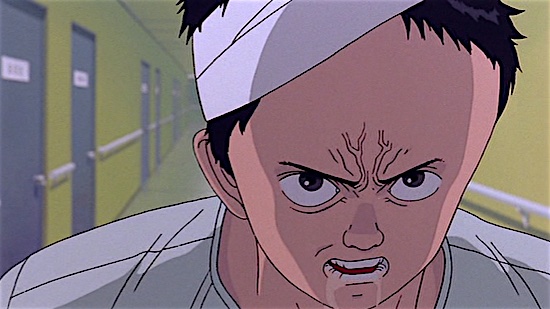
I’ve written in the past before about how at the crux of Akira’s narrative is the story of watching your best friend turn into a monster. That friend is Tetsuo. While the details of his early life are scant, what is known is revelatory to understanding the latent insecurities and traumas which fuel his arc as the deuteragonist of both Katsuhiro Otomo’s original manga and film. The youngest member of the Capsules, a youth motorcycle gang in post-apocalyptic metropolis of Neo-Tokyo, Tetsuo was abandoned by his parents at a young age before being taken in as a ward of the state. Because of this, Tetsuo has long harbored a deep distrust of authority figures and a complicated mix of admiration and resentment for Kaneda, his best friend since youth and leader of the Capsules. After a fateful collision with a mysterious child during a routine turf war with a rival gang, Tetsuo’s long-dormant powers as an “Esper” are awakened and he becomes plagued with visions and waking nightmares of another child known only as “Akira.” As Tetsuo’s mental and emotional state worsens with the unchecked abuse of his powers, he becomes drunk with power, cutting a swath of havoc and destruction across the city in his personal search to find— and perhaps kill—the elusive Akira. Barring the incitement of unchecked psychic abilities which corrode his mind from a lack of restraint, Tetsuo’s story is not unlike the stories of those who grew up in the wake of a post-bomb Japan, a time where the country’s nascent rise as an automotive and industrial superpower left nearly an entire generation of disaffected youths disillusioned with the promise of a better future and hateful towards the negligence and abandonment of their elders. Akira is a time capsule of a unique period of Japanese history, siphoned through the lens of proto-cyberpunk and body horror sci-fi to deliver a story rich in a tangled web of pathos, anger, ambition and heartache. In that sense, Tetsuo’s story exemplifies all of those qualities which define Akira as a whole. Despite his insanity, one can’t help but feel for him: a disaffected young man lashing out at a world that had long since discarded him and, in doing so, grooming a monster unlike any that they had known before.
12. Dr. Tenma
Series: Astro Boy (1980, 2003)
Category: Archetypal Adversary
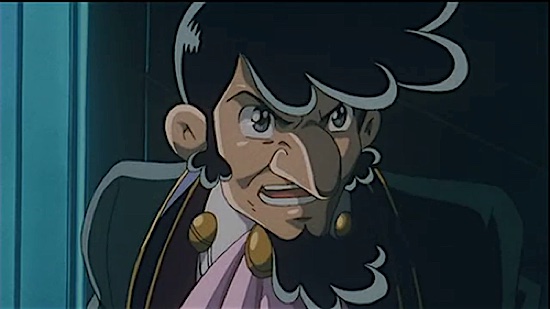
Negligent and absent fathers are universal across all forms of anime, though especially in the “shonen” genre of action-adventure and martial arts-focused series. Of all the most disreputable and horrendous dads worthy of condemnation in anime, Dr. Tenma ranks among the worst by dint of his seniority. A legendary scientist and pioneer of robotics engineering, Tenma is the creator and “father” of Atom, or “Astro,” the titular protagonist of Osamu Tezuka’s landmark 1980 manga and anime series of the same name. In the depths of his despair following the death of his son Tobio in a car collision, Tenma pours the sum total of his grief and genius into resurrecting him in the form of a robot, Atom, who he then adopts and raises as his own. However, after several seemingly happy years living together, Tenma becomes despondent—sullen and resentful that no matter how advanced his intelligence and empathy, the boy robot could never grow or age like a real child, thus making a painful reminder of Tenma’s own inability to fill the void of his son’s death. Of no fault of his own, Astro is abandoned by his father and sold to a robot circus, where he is then later adopted by the kindly Professor Ochanomizu and given a true home. Astro would later confront his crazed father and fight against his army of malicious robots, besting them time and again before eventually convincing Tenma to repent and renounce his evil ways. Tenma’s actions serves as not only the catalyst to Astro’s growth as a sentient being, but the spark to his maturation into true hero.
11. Meruem
Series: Hunter x Hunter (2011)
Category: Archetypal Adversary
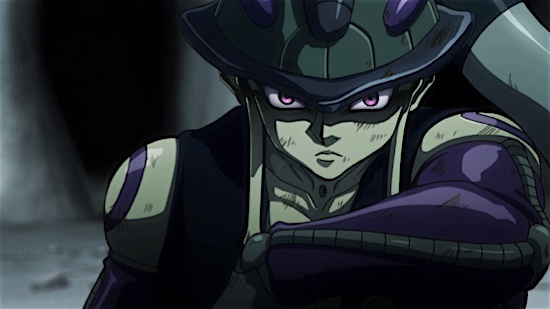
The primary antagonist of Hunter x Hunter’s fifth arc, Meruem is the half-human offspring of Chimera Ant Queen and the subsequent ruler of the Chimera Ant species following her death. A constantly evolving species of insectoid creatures who absorb the assorted quirks and powers of all other species they devour, Meruem was the culmination of the Chimera Ant Queen’s desire to create the “perfect being” by devouring and absorbing the life-force of humans who exude highly concentrated “Nen” energy. In a sense, Meruem is Hunter x Hunter’s equivalent to Dragon Ball Z’s Cell, although far more unsettling and dynamic of a personality than the latter. Initially vain, merciless and prone to flashes of abrupt violence against even the most loyal of his followers, Meruem murders scores of men, women and children in his bid for self-perfection, amassing their collective “Nen” energy to the point of becoming arguably the most powerful entity in the world. But the consumption of humans comes at a cost. The more humans that Meruem and the Chimera Ants consume, the more the “residual memories” of the consumed humans begins to affect their personalities—coloring the single-minded “inhuman perfection” of the Ants’ personality with the strengths and assorted foibles of human nature. The scope of Meruem’s arc from villain into … something else is too profound, too emotionally dense and thematically compelling to properly convey within the space of a single blurb. For this and many other reasons, Meruem deserves recognition as one of the most notable adversaries in the canon of anime.
10. Lil’ Slugger
Series: Paranoia Agent (2004)
Category: Existential Antagonist
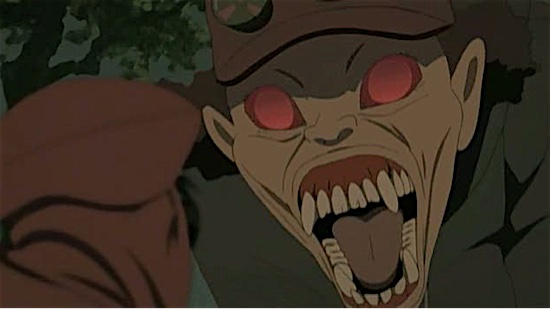
Lil’ Slugger is no simple villain. He is, in the purest sense of the word, a meme—an idea or belief which percolates from one person to another, infecting the collective subconscious like a virus. Lil’ Slugger is a boogeyman, a monster birthed from the primordial psychic soup of fear, anxiety, repression and malaise that defines the modern age. We, the viewer, are first introduced to the being known as Lil’ Slugger when he attacks Tsukiko Sagi, the “protagonist” of Paranoia Agent, in the first episode of series. From there, Lil’ Slugger becomes a constant throughout the revolving anthology of series’ thirteen episode run, preying on the emotionally compromised mental states of his victims while simultaneously “freeing” them from the psychological weight of their respective burdens. What we later come to learn in the series’ finale is that Little Slugger frankly never existed. He is the creation of Tsukiko herself, a paranormal boogeyman resurfacing from her childhood and substantiated into reality by collective ennui of the 21st century zeitgeist. Lil’ Slugger is a larger-than-life antagonist because he is simply that: the mass hysteria of the modern world filtered through the anthropomorphic shell of a social virus. Superstition is a powerful force that, when concentrated within a society, can take on a life of its own. In the words of Francisco Goya, “The sleep of reason breeds monsters.”
9. The Anti-Spirals
Series: Tengen Toppa Gurren Lagann (2007)
Category: Existential Antagonist

Okay, now bear with me here—according to the first law of thermodynamics, energy cannot be created or destroyed; it can merely be transferred from one form to another. The second law states that, as energy is exerted within a closed system, that energy will inevitably dissipate and become irretrievable. This dissipation is roughly understood and defined as “entropy.” It follows then that, if the universe itself is a closed system, no matter how seemingly inexhaustible and expanding, the exponential diffusion of energy will inevitably outpace the size of that system, rendering the universe a cold lifeless place incapable of sustaining itself. In the fiction of Gurren Lagann, The Anti-Spiral was created to avert an even more perilous entropic state known as “The Spiral Nemesis,” safeguarding the capacity for life at all costs. Even at the cost of life itself. The Anti-Spirals are a consortium of sentient races who combined to create a multi-dimensional hive-mind to systematically cull whole civilizations whose “Spiral energy” exertion threatens to accelerate the universe’s entropic destruction. The Anti-Spirals wield considerable power in bending, though not breaking, the fundamental forces of universe to their whim, be it by trapping Team Dai-Gurren inside an extra-dimensional pocket of space, or even dueling in gigantic mechas atop whole galaxies. Their efforts at muting life for the sake of survival, however, are little more than an exercise in futility, a death rattle dissipating into the indifferent vacuum of space.
8. Kyubey
Series: Puella Magi Madoka Magica (2011)
Category: Existential Antagonist

Kyubey is an incubator, a species of cat-like entities with advanced technology. The incubators’ motivations aren’t that far off from that of the Anti-Spirals, though their methods wildly diverge. Rather than exterminating species who happen to punch above their weight class, the incubators’ solution to the problem of entropy is to transform the universe’s closed system into an open one, redirecting a renewable source of energy from outside the universe back into our own. This energy is generated through emotion, and since Kyubey’s species is incapable of expressing emotion, they go out in search of a species that is. In the fiction of Madoka Magica, that species is humanity, though more specifically, adolescent human girls. The incubator’s answer is this: enter into contracts with young girls by granting their “wishes” in exchange for them becoming “magical girls,” pitting them in battle against “witches” while cultivating their emotions to be harvested into energy. Simple, right? The catch is that this energy has its own entropic lifecycle, with magical girls transforming into witches after their potential has been depleted, ensnaring them in a cascading cycle of pain and death fueled out of adolescent naïveté. Kyubey’s contracts are bargains worthy of Mephistopheles, entrapping human souls and pumping them for fuel until depleted and discarding them with equal dispassion. Eventually, this process will culminate in the death of the human race itself, with Kyubey’s species then proceeding to move on to the next species capable of producing emotions. What’s worse is that Kyubey, itself an entity incapable of expressing or understanding emotion, sees nothing wrong with exploiting a species’ hopes and fears to its benefit. To incubators, emotions are merely a subset of branching hypotheses through which to follow through to a favorable conclusion. It’s one thing to wipe out whole species with cataclysmic disregard, but it’s another to groom them for slaughter and have the inherent cruelty of that act be totally lost on you.
7. Sibyl System
Series: Psycho-Pass (2012)
Category: Existential Antagonist
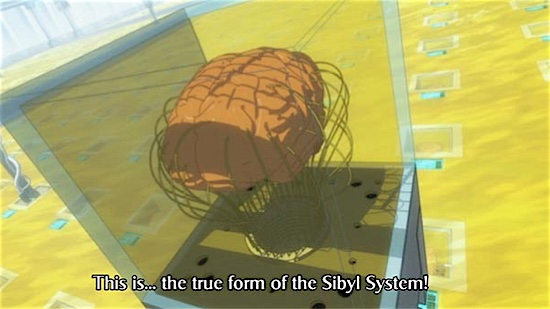
It’s a common maxim that at the heart of every utopia lies a dystopia. It follows then that every dystopia in and of itself represents a failure of the human imagination to create a society that reconciles the complexity of human motivations within the inflexibility of bureaucracy. Utopias are sustained through two impossible, contradictory criteria: that everyone is willfully complicit in the status quo, while allowing others the potential to exist outside of that status quo. In Psycho-Pass, that status quo is the Sibyl System. An autonomous computer network which gauges each individual’s susceptibility to criminal intent, the Sibyl System acts as the governing authority of 22nd-century Japan, handling all administrative and punitive responsibilities throughout the country. Though championed as a perfect, impartial A.I. designed to uplift the condition of each member of its society, the Sibyl System is in reality a computerized hive-mind of sociopaths who, existing apart from the system’s judgement, view themselves as the essential purveyors of it. There’s something to be said of society run by murderers, inflicting their collective cruelty onto an unsuspecting populace under the auspices of not only impartiality, but empathy. Some would argue that Shogo Makishima is the series’ primary villain, but would he even exist or be enabled to do what he did were he not brought up under Sibyl’s control? With the society of the Sibyl System now wholly dependent on the deliberate cultivation of psychopathy, the so-called “philosopher kings” are now running the asylum. Kyubey’s cruelty originated from a macro-level indifference which accompanies a cosmic perspective. That the Sibyl System, a system founded by humans, was able to emulate that cruelty presumably with the best of intentions is a chilling scenario, to say the least.
6. The Major
Series: Hellsing: Ultimate (2006)
Category: Quintessential Sociopath

It seems a tad … well, on-the-nose to include a literal nazi among a list of anime’s most notable villains, doesn’t it? Nonetheless, Hellsing’s eponymous Major warrants mention here by dint of his sheer depravity alone. A former first lieutenant of the SS, the Major was hand chosen by the Fuhrer himself to head an occult project designed to create super-powered vampire soldiers that would deliver World War II into the hands of the Reich. Fortunately his plans were foiled by the nosferatu Alucard and his partner Walter Dornez, who destroyed the Nazis’ vampire facility, forcing the Major to flee into the jungles of Argentina to continue their research. The Major emerges decades later in the modern world as the head of Millennium, a clandestine fascist organization founded with the intent of waging a world war with the intent of fulfilling Hitler’s goal of a “Thousand Year Reich.” The Major’s goals, however, are somehow far more unhinged than that. Despite being an impassioned orator and uncompromising strategist willing to sacrifice countless soldiers, the Major himself had no especial loyalty or passion for the cause of Millennium.His sole obsession is to plunge the world into an unending conflict to the point of endangering not only the lives of others but also his own. The Major’s leadership of Millennium, his decades espousing the genocidal ideology of fascists, and subsequent war against the Hellsing organization, the Vatican, and the entire world serve only as a pretext to satiate his insatiable bloodlust. The Major is one of anime’s insidious villains, a charismatic, nihilistic sociopath driven purely by his sadomasochistic death wish.
5. Shinobu Sensui
Series: Yu Yu Hakusho (1992)
Category: Quintessential Sociopath
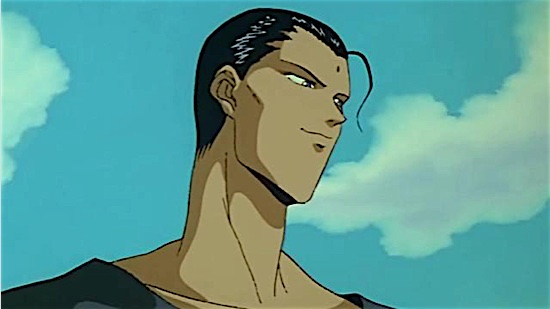
The predecessor to Yusuke Urameshi, Yu Yu Hakusho’s protagonist, Shinobu Sensui was the former acting spirit detective chosen by Koenma to safeguard the border between the living and spirit world. Gifted from a young age with heightened spiritual sensitivity, Sensui was a stalwart defender of humankind whose strength and charisma inspired admiration in allies and adversaries alike. Sensui’s fatal weakness was ironically his greatest strength; his unerring moral compass between right and wrong. Purpose-driven to the point of obsession, Sensui believed that humans were purer than demons who, by their nature, were considered an scourge worthy of being extinguished. That is, until he witnessed the Feast of Human Vices, a bacchanalian celebration consisting of humans torturing and executing demons in the cruelest methods imaginable. Sensui snapped, killing everyone in attendance as his mind splintered in the wake of his guiding philosophy being upended. Sensui retreated into reclusion, manifesting several split personalities each with their own host of unique powers, resurfacing only years later with a plot to destroy the world he had once swore to protect. His partner Itsuki said it best, “[Sensui] can be violent, courageous, spiritually pure, and even fragile.” He is a paragon of some of humanity’s greatest qualities, combined with an unwavering cause for justice. All of which make him a compelling antagonist and villain.
4. Shou Tucker
Series: Fullmetal Alchemist (2003), Fullmetal Alchemist: Brotherhood (2009)
Category: Quintessential Sociopath
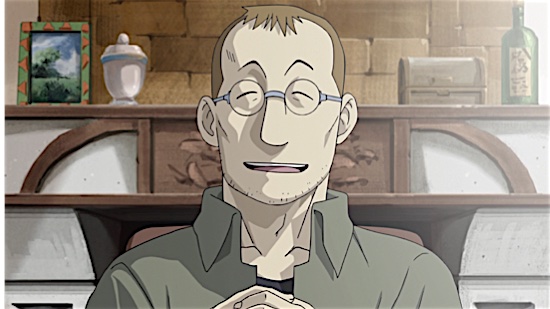
Had they existed in the same universe, Shou Tucker might have been one of the many humans to convince Shinobu Sensui that through their example the species was beyond saving. Though far from the primary antagonist of Fullmetal Alchemist, Tucker has earned notoriety as one of the series’ most depraved characters solely to the credit of one unforgivable act. When Ed and Alphonse Elric first meet Tucker, he’s an affable if bookish alchemist living alone with his daughter Nina, working with the state to pursue his research into chimera hybrid alchemy. But beneath his genial demeanor lies a well of desperation. Two years prior to his appearance, Tucker and his family had lived in abject poverty before earning his State Alchemist License on the back of his findings producing a chimera capable of human speech. Tucker’s wife had left him just before this development, leaving him as the sole caregiver to Nina. With his yearly assessment test impending and his superiors pressuring him to produce results or be cast out, Tucker recreates that single heinous, heart-wrenching act of two years ago. When Ed and Alphonse discover that Tucker had managed to produce another successful chimera, they soon realize the bitter truth: Tucker transmuted his daughter’s body and soul with that of their family dog, sacrificing her to a life of agony and confusion. When pressed, Shou flies into a fit of hysteria, claiming his daughter’s life as a necessity to the furtherance of scientific knowledge. “All advancements have a price … when you have the power to do something, it’s hard not to try.” Shou’s depravity is a painful reminder to Ed and Alphonse of their own sacrilege and a chilling, personal depiction of what barbarous acts one is capable of committing if only to be justified by a supposed “greater good.”
3. Gendo Ikari
Series: Neon Genesis Evangelion (1995)
Category: Quintessential Sociopath
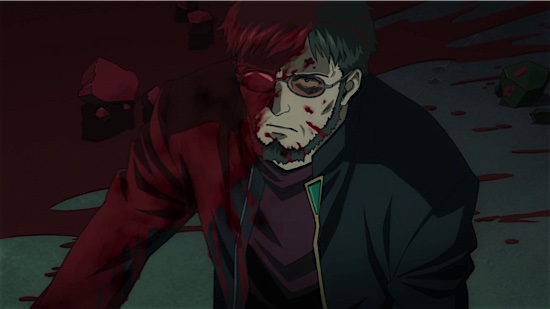
Don’t say it. Wherever you are right now, I know exactly what phrase just popped into your mind now as your eyes glanced across this entry. “Gendo Ikari did nothing wrong.” It’s a joke, I get it. Or at least I get it as much of one can. In the vein of saying “Hitler did nothing wrong,” it’s a memetic mantra that has gained traction among fans of the Evangelion series for its brazen darkness and declarative simplicity. But like so many other memes, it’s metastasized from a benign bit of shock humor into a terrifyingly genuine appeal to devil’s advocacy. So in the interest of setting the record straight, allow me, in no uncertain terms, to summarize what exactly Gendo Ikari did wrong. Gendo Ikari, of sound mind and clear conscience, was actively complicit in the premature instigation of the biblical apocalypse, resulting in a near extinction-level event that caused the death of nearly two-thirds of the human population. Furthermore, this prompted the re-awakening and advent of the “Angels,” a colossal species of proto-human creatures compelled by instinctual programming to eradicate the last remnants of humanity at all costs. And that’s just taking stock of Gendo’s transgressions on a macro-level. Gendo emotionally neglected his son Shinji, estranging himself from him for over twelve years, only to offer him up as a sacrificial pawn in his bid to artificially bootstrap humanity’s ascent into evolutionary godhood so that he could be reunited with his dead wife. And before you say, “Oh, well at least he loved his wife,” Gendo’s interim solution to her absence is to clone her DNA into a harem of emotionally dependent albino ingenues who share a dogged infatuation for their creator. And that’s not even mentioning the horrific emotional abuse and mental manipulation he inflicts on Dr. Ritsuko Akagi and her mother Naoko. Gendo Ikari’s actions are proof of not only love’s capacity to overcome any obstacle, but to make monsters of us all.
2. Griffith
Series: Berserk (2016)
Category: Quintessential Sociopath
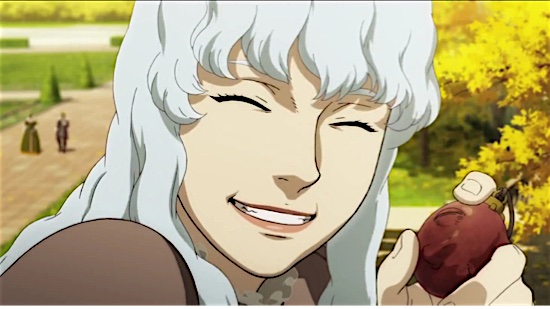
Griffith is what would happen if Robert Greene and Ayn Rand co-wrote an anime character. A common-born man whose supernatural beauty and charisma inspires desire and devotion in both women and men alike, Griffith is also a masterful tactician and swordsman of near-unparalleled skill. Leader of the Band of the Hawk, Griffith’s undefeated status as “The White Hawk” earned him favor among the nobility of Midland, especially with that of the King’s daughter, Charlotte. All of these feats were achieved towards a singular aim: to assert himself to the throne of Midland, remaking the kingdom in his own image. But this was not to be. In truth, Griffith is the product of a centuries’ old eugenic plan orchestrated by the God Hand, a cabal of extra-dimensional cenobite-like beings who rule over the physical world in the stead of some yet greater, unknown evil. Sheltered from any true obstacle his entire life, Griffith was unknowingly groomed to become one of their own, but only after all hope for his mortal dream had been utterly destroyed. Ignorant of the supernatural privileges bestowed upon him, Griffith nurtured a casual contempt for anyone whom he had deemed subordinate to his whims since youth. As such, despite being the beloved leader of the Band of the Hawk, he ultimately views his comrades as a tolerable means to an end. “They are my able soldiers it’s true, they are dedicated comrades who sacrifice themselves for my dream so that it might be real. But that does not make them friends [….] For me to call a man my friend, he must be equal to me in all respects.” Griffith does not befriend allies; he collects them. This callousness ultimately culminates in the Eclipse, to this day one of the most heart-wrenching moments in all of Berserk, wherein Griffith sacrifices his entire mercenary troupe to be feasted on by a host of demons in order to anoint his ascension to the head of the God Hand. Griffith is the perfect foil to Berserk’s Guts—two men whose battle against one another epitomizes the thematic struggle between fate and self-determination. Make no mistake, Griffith is a villain of Luciferian proportions.
1. Johan Liebert
Series: Monster (2004 – 2012)
Category: Quintessential Sociopath
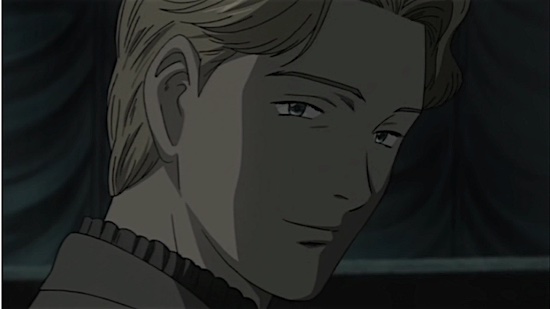
We’ve covered a wide assortment of eminent and inimitable villains on this list. From popular mainstays to emissaries of entropy, sentient memes and sadistic sociopaths, to literary archetypes and infernal demi-gods—we’ve run the gamut of some of the foulest adversaries to ever grace the medium of anime. So it only stands to reason then that the final inductee of this list, or of any list of anime’s top villains, would have to be a particular type of monster to reign in hell above all others. Dear reader, Johan Liebert is that monster. The product of a clandestine eugenics program founded to create a “übermensch” intended to lead all of humanity, the boy who later come to be known as Johan and his sister were subjected to unspeakable cruelties by their handlers. An uncompromisingly cruel and violent sociopath, Johan’s outward exterior is nonetheless that of a generous and soft-spoken young man with a naturally affable personality. Caught being the split of two dissociative personalities; one sadistic, the other helplessly empathic, Johan’s talent for persuasion is best exemplified in one of his most favorite hobbies: grooming serial killers. Johan possesses an intuitive, almost preternatural ability to identify the latent neurosis of psychopathic personalities, ingratiating himself with them, beguiling them, until finally manipulating them to commit acts of violence on his behalf through a combination of equal parts intimidation and seduction. Johan is a character often compared to Light Yagami, the protagonist and villain of Tsugumi Ohba’s supernatural mystery series Death Note, or even Griffith from Kentaro Miura’s aforementioned Berserk series. But the crucial, defining difference between Johan and latter is substance to the claim of his supremacy. Despite all that he was able to accomplish over the course of Naoki Urasawa’s Monster — manipulating over fifty people to kill one another through suggestion alone, framing the man who saved his life for murder, operating a massive money laundering operation at the heart of Germany, and coordinating a shadow network of killers to do his bidding— Johan has no special abilities to speak of, save for intelligence. No magical notebook capable of killing anyone whose name is written in its pages, no unholy totem gifting him with the blessing of divine fate, nothing. He is a human being, no more and no less, and that is precisely what makes him so terrifying. He exemplifies best the key idea which has guided the vetting and order of this list: that evil, far from being a vast and inhuman concept, is intimate. He is a spider, weaving a web of criminality and chaos wherever he goes. He is, without question, a monster.